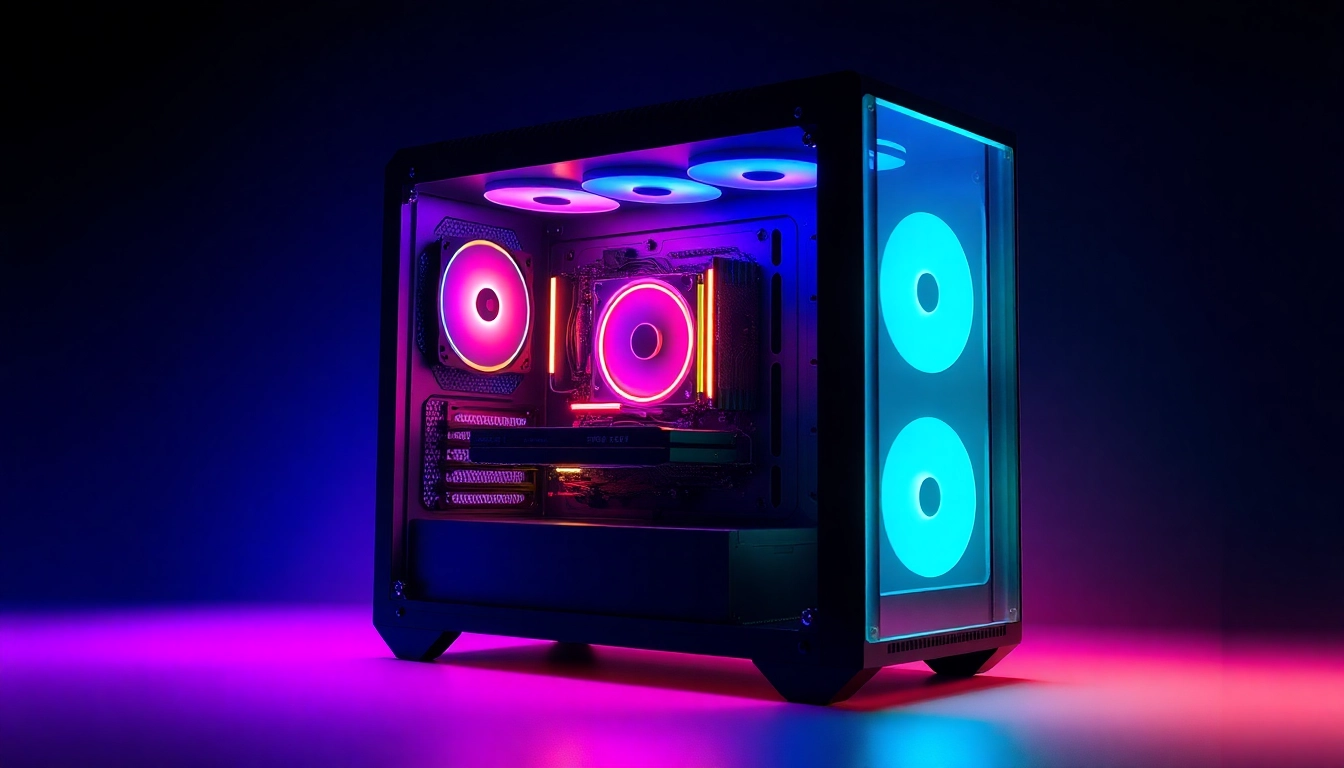Introduction to 3D Model Visualizations
3D model visualizations have become an integral part of various sectors including architecture, engineering, filmmaking, and marketing. These visual creations allow professionals to convey ideas and concepts in a visually compelling way, enabling audiences to better understand and engage with the content. With advancements in technology, the capabilities and applications of these visualizations are broadening, making them increasingly essential in professional environments. 3D Model Visualizations provide not just aesthetic appeal but also functional insights that drive informed decision-making.
What are 3D Model Visualizations?
At its core, a 3D model visualization is the process of creating a three-dimensional representation of an object, environment, or data set using digital tools and software. Unlike traditional 2D representations, 3D visualizations offer a spatial perspective which helps in understanding the height, width, and depth of the subject. The creation of these models involves intricate processes that encompass the use of textures, lighting, and shading to achieve realism.
Importance in Modern Design
The significance of 3D model visualizations extends far beyond mere aesthetic appeal. In modern design, they serve multiple critical functions, such as:
- Enhanced Communication: Visualizations serve as a universal language, bridging gaps between technical jargon and client comprehension.
- Improved Decision Making: 3D models enable stakeholders to visualize projects more effectively, leading to more informed decision-making.
- Cost Efficiency: Early identification of potential design flaws can save significant resources in later stages of a project.
- Marketing Tool: For businesses, engaging visual content can significantly enhance marketing efforts, capturing attention and conveying professional expertise.
Common Applications and Industries
3D visualizations find applications in various industries, each leveraging this technology uniquely:
- Architecture: Architects utilize 3D visuals to develop building designs that clients can interact with, enhancing understanding and eliciting feedback.
- Product Design: Designers use 3D visualizations to create prototypes, allowing for early visualization and modifications before production.
- Healthcare: In medical fields, 3D models of anatomy can be used for educational purposes, surgical planning, and patient interaction.
- Entertainment: Film and video game industries rely heavily on 3D graphics to create immersive experiences for audiences.
Tools and Software for Creating 3D Visualizations
Overview of Leading Software Solutions
The choice of software tools can greatly impact the effectiveness of 3D model visualizations. Leading software solutions include:
- Autodesk Maya: Renowned for its powerful modeling and animation capabilities, it’s widely used in film and game development.
- Blender: A free, open-source software, Blender offers comprehensive tools for 3D modeling, animation, and rendering.
- SketchUp: Particularly popular in architecture, SketchUp allows users to create 3D models with ease and efficiency.
- Cinema 4D: This 3D software is known for its intuitive user interface and exceptional rendering capabilities, making it ideal for motion graphics.
Comparative Analysis of 3D Visualization Software
When comparing software, certain factors should be taken into account, including ease of use, rendering quality, available features, and the nature of the projects undertaken. For instance:
- Maya excels in high-end visual effects but may have a steeper learning curve.
- Blender is versatile and powerful, but its interface can be overwhelming for beginners.
- SketchUp offers simplicity and is appealing among architects, though it lacks some advanced features available in other software.
Choosing the Right Tool for Your Needs
Selecting the appropriate visualization software hinges on project requirements, user skill level, and budget constraints. Professionals should evaluate the following criteria:
- Project Scope: Consider the complexity and scale of the project—larger projects may require more robust tools.
- Skill Level: Beginners might opt for user-friendly applications, while experienced users can handle more complex software.
- Budget: Evaluate if the software fits within financial constraints, keeping in mind both initial costs and subscription models.
Best Practices in 3D Model Visualization
Designing Effective 3D Visuals
Creating effective 3D visualizations involves more than just technical skill—it is an art. Here are best practices to enhance your designs:
- Understand Your Audience: Tailor your visuals based on who will be viewing the models. Simplified designs for clients and more detailed works for technical experts.
- Focus on Quality Over Quantity: A few high-quality visuals are far more effective than many mediocre ones.
- Utilize Effective Lighting: Lighting can make or break a 3D model; proper light placement enhances realism and focuses attention.
- Get Feedback: Regularly seek input from colleagues and stakeholders to refine and improve your visualizations.
Common Mistakes to Avoid
Avoid these common pitfalls when creating 3D model visualizations:
- Overcomplicating Designs: While detail is important, overly intricate designs can confuse rather than inform.
- Neglecting Scale: All elements should be in proportion to create a realistic environment.
- Ignoring Context: Present 3D models within a relevant context to enhance relatability.
Tips for Improving Visualization Quality
To enhance the quality of your 3D visualizations, consider the following tips:
- Regularly Update Your Skills: Stay abreast of the latest trends and technologies in 3D modeling.
- Invest in Good Hardware: A powerful computer optimized for graphics rendering can drastically improve workflow.
- Experiment and Innovate: Push creative boundaries by trying out new tools and styles to differentiate your work.
Case Studies: Successful Implementations
Architectural Visualization Success Stories
One notable case is the use of 3D visualization by renowned architectural firms such as Zaha Hadid Architects. They leverage these visuals to showcase futuristic designs, allowing clients to engage with proposed structures through virtual tours, enabling enhanced feedback during the design process.
3D Visualizations in Product Design
Companies like Apple utilize 3D modeling for product design to prototype and iterate on new products before physical manufacturing. This process mitigates risk and facilitates the previous identification of flaws, ensuring a smoother production process.
Impact on Marketing Strategies
Many businesses employ 3D visualizations for marketing campaigns, especially in product launches. For example, car manufacturers use highly detailed, realistic 3D models in their advertisements, allowing potential customers to experience products virtually, thereby increasing engagement and conversion rates.
The Future of 3D Model Visualizations
Emerging Trends in Technology
Emerging technologies such as augmented reality (AR) and virtual reality (VR) are set to revolutionize 3D visualization. These technologies enable users to interact with 3D models in real-time, facilitating immersive experiences that were previously unfeasible in conventional 3D visualizations.
Predictions for Future Applications
As industries continue to embrace digital transformation, the future applications of 3D model visualizations are poised to expand in sectors like education, where they will be used to create interactive educational models, and in remote collaboration, where teams can work together in a shared virtual space regardless of location.
The Role of Machine Learning in 3D Visualizations
Machine learning is set to play a pivotal role in the advancement of 3D visualizations. By analyzing user interactions and preferences, machine learning algorithms will help automate the design process, optimizing both accuracy and efficiency. Furthermore, they can improve realism in visualizations through adaptive techniques that enhance texture and lighting based on contextual factors.



